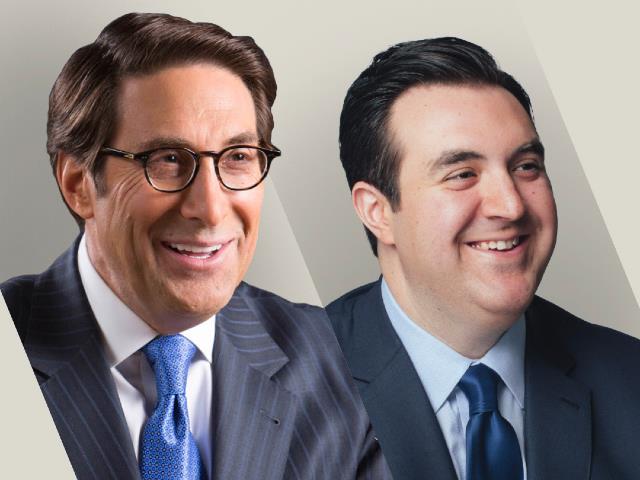A Theodore Roosevelt library is opening soon. Visitors must pack a bag for North Dakota
News > Politics & Government News

Audio By Carbonatix
10:15 AM on Tuesday, October 14
By JACK DURA
MEDORA, N.D. (AP) — The day his young wife and mother died, Theodore Roosevelt wrote in his diary that “the light has gone out of my life,” and it was only through extended trips to the isolated Dakota Territory in the 1880s that he regained “the romance" of living.
A library examining the country’s 26th president will open next summer in the North Dakota landscape remarkably similar to what Roosevelt would have experienced: far from any city and surrounded by rugged hills beneath a vast sky.
The isolation that was so appealing to Roosevelt remains today, and it raises a question.
How many people will visit a museum so distant from the rest of America?
“I think that’s a calculated risk that is being taken, and I actually think it’s a good one,” said Clay Jenkinson, a public humanities scholar and Roosevelt author who believes the area's beauty will help draw visitors.
The nearly 100,000-square-foot facility near Medora, North Dakota, is planned to open July 4, 2026, America's 250th anniversary. All living presidents have been invited.
Library Foundation CEO Ed O'Keefe said he wants the library to be where “kids drag their parents," a setting for picnics, weddings and even presidential debates.
Library boosters have a $450 million fundraising goal, with $344 million in cash and pledges so far, including from oil executive Harold Hamm and Walmart heir Rob Walton and his wife, Melani. Construction, design and related costs alone are pegged at $276 million. Other costs include millions for developing exhibits and digitizing archives.
The library rises from the flat, grassy top of a butte across a highway from Theodore Roosevelt National Park, which had more than 732,000 visits last year. A path leads onto the library's sloping roof planted with grasses and flowers. Inside, enormous rammed-earth walls of layered colors represent the dramatic Badlands.
“This is a purposeful place. We like to say that the library is the landscape,” O'Keefe said.
Roosevelt came to the Badlands to hunt bison in 1883. He invested in a ranching operation and returned multiple times over several years following the deaths of his wife and mother.
Stories of his adventures live on, from riding with cowboys to knocking out a bully in a bar and apprehending three boat thieves.
In an Independence Day speech in Dickinson, Roosevelt gave his famous “I like big things” oration, which more or less was the beginning of his speaking career, said William Hansard, public historian at Dickinson State University's Theodore Roosevelt Center.
“He goes on to talk about how all of the material prosperity that America has means nothing if it's not backed up by morals and virtues. ... All these big things in the world don't matter if Americans don't have good character to use them and to use them well and correctly,” Hansard said.
Roosevelt's time in Dakota largely ended after cattle losses in the terrible winter of 1886-87. He later said he never would have been president were it not for his time in North Dakota.
Roosevelt is a favorite president of people across the political spectrum, and his use of executive power — such as conserving public lands and building the Panama Canal — has shaped the modern presidency.
“Roosevelt will frequently do things that he believes are morally and legally right, and let Congress debate it later,” Hansard said. “He rules very, very much by executive order, and again, this is something that's been a huge debate over the past several presidencies on both sides of the aisle.”
The Roosevelt library might be the loneliest presidential center in the country. Medora has about 160 residents, and is hours away by car from North Dakota’s largest cities of Bismarck and Fargo.
The Obama Presidential Center is going up on Chicago's South Side. Florida Republican officials recently gifted nearly 3 acres of prime real estate in downtown Miami for President Donald Trump’s presidential library. Other presidential libraries include locations in Atlanta, Boston and Dallas.
Library boosters are hoping tourists visiting Mount Rushmore, Yellowstone and Theodore Roosevelt National Park will add the library to their itinerary.
But there's no question North Dakota's winters can be brutal with subzero temperatures and blizzards that close highways and make travel nearly impossible.
Still, Roosevelt admirers note that earlier attempts to create Roosevelt libraries in other places fell short, and it was in North Dakota where the idea really took root.
“We North Dakotans who justly feel that we created Theodore Roosevelt, that he became the Theodore Roosevelt of American greatness and memory during his time here in North Dakota, we feel that it would be very appropriate to have a presidential library in the heart of the Badlands,” Jenkinson said.
And beyond hardy winter travelers, O'Keefe said, library planners want to bring thousands of eighth graders from a five-state area to the library outside of summer, envisioning a “night at the museum” program.
“It's not going to be as busy as the summer, but that's the magic of it. You get a little more of the Badlands to yourself,” O'Keefe said.
O’Keefe said the facility will “humanize, not lionize” Theodore Roosevelt.
“We’re not going to shy away from the controversies and things that, perhaps if this library had been built 125 years ago, wouldn’t have been mentioned,” O'Keefe said.
It would be a travesty to portray Roosevelt only as a wholly good figure, said Jenkinson, who called him a man of his times, a bully, an imperialist and perhaps a warmonger.
He invited Black leader Booker T. Washington to dine at the White House. But he discharged “without honor” an entire regiment of 167 Black soldiers without due process, in connection with a shooting in a Texas town. Roosevelt encouraged photographer Edward S. Curtis in his photography of Native peoples, and some Native Americans were among Roosevelt's Rough Riders.
“But he also believed that Anglo-Saxon white America had a right and even a duty to dispossess Native peoples and install what he took to be a superior civilization. There was no ambiguity about that,” Jenkinson said.
Kermit Roosevelt said he hopes the library helps people understand the legacy of his great-great-grandfather.
“I really do think Theodore Roosevelt is important for us now because of his ability to appeal to people across the political spectrum and, in our polarized times, maybe bring people together and give them a sense of what it means to be American,” he said.












